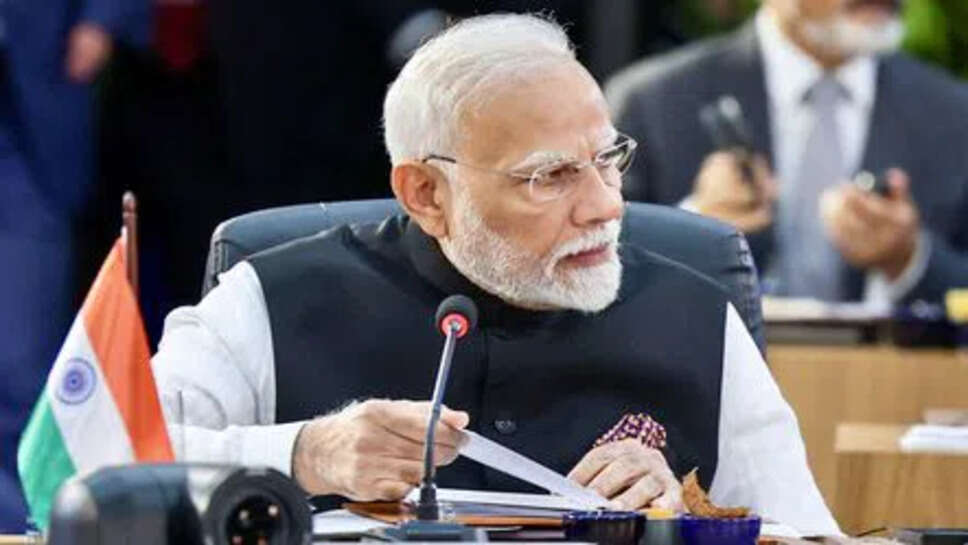India Eyes Self-Reliance as Rare Earth Demand Outpaces Supply

The government is moving swiftly to address the growing shortage of rare earth elements, a critical set of minerals vital for modern technology, defense, and clean energy. Prime Minister Narendra Modi, while addressing industry leaders and policymakers, emphasized the need for “swadeshi” solutions to reduce dependence on foreign suppliers and strengthen India’s strategic autonomy.
Rare earth elements, though present in small quantities, form the backbone of multiple industries — from smartphones and electric vehicles to advanced defense systems and renewable energy technologies. With global competition intensifying and supply chains tightening, India has begun to view the shortage as not merely an economic issue but also one tied to national security.
Why Rare Earths Matter
The modern world runs on technologies powered by rare earth elements such as neodymium, dysprosium, and cerium. These materials are essential for producing high-strength magnets, semiconductors, batteries, and even medical equipment. As India scales up its ambitions in electric mobility, renewable energy, and defense manufacturing, the demand for rare earths has surged.
Currently, a large share of the world’s rare earth processing and refining capacity lies in China. This concentration has sparked global concerns, as any disruption in supply or a rise in prices could impact industries worldwide. For India, which imports a significant proportion of its needs, the risk is particularly pressing.
PM’s Call for Swadeshi Push
In his remarks, the Prime Minister urged Indian industries and research institutions to step forward with innovations that reduce dependency on external suppliers. He emphasized the vision of “Atmanirbhar Bharat” — self-reliant India — and linked the rare earth challenge to the broader call for swadeshi solutions.
“India cannot afford to be at the mercy of external markets when it comes to critical minerals. We must innovate, invest, and build our own supply chains,” he said, highlighting the role of youth, entrepreneurs, and scientists in this mission.
Government’s Emerging Strategy
Officials confirmed that the government is working on a multipronged strategy. This includes identifying new deposits within the country, developing environmentally friendly mining techniques, and investing in advanced processing facilities. India already has some known reserves of monazite sands along its coastal regions, which contain valuable rare earths, but extraction and refining have lagged due to technological and environmental hurdles.
The plan also envisions stronger collaboration between public sector undertakings, private companies, and global partners who can bring advanced expertise in rare earth processing. In addition, research funding is expected to be expanded for developing substitutes and recycling technologies that can minimize fresh extraction.
Industry Concerns
Industry leaders have welcomed the government’s proactive stance but caution that results will not come overnight. Building a full-fledged rare earth ecosystem requires heavy capital, advanced technology, and long-term commitment. “The challenge is not just about finding deposits, but also about refining them to global standards without harming the environment,” said one senior industry executive.
Companies engaged in electronics manufacturing, clean energy, and defense production are especially anxious about securing a stable supply. With global competition heating up, many worry that any prolonged shortage could delay India’s domestic manufacturing targets.
Linking Minerals to National Security
Beyond economic concerns, the rare earth issue has acquired a strategic dimension. Defense experts note that advanced missiles, radar systems, and communication technologies depend heavily on these materials. As India modernizes its defense forces, ensuring access to rare earths has become an urgent matter of national security.
The Prime Minister underscored this point, stating that “no nation can be truly secure if it lacks access to the materials that power its defense and energy needs.” This statement reflects a growing recognition that mineral security is as crucial as food or energy security in the 21st century.
Global Context
India is not alone in facing these challenges. Nations such as the United States, Japan, and members of the European Union have all raised alarms over their dependence on external suppliers. Many have begun investing in alternative sources, recycling initiatives, and joint ventures to mitigate risks.
For India, this presents both a challenge and an opportunity. By accelerating domestic capabilities, the country could not only reduce imports but also emerge as a significant player in the global rare earth supply chain. This would align with the larger vision of positioning India as a global manufacturing hub under initiatives like “Make in India.”
The Swadeshi Advantage
The call for swadeshi solutions resonates deeply with India’s history of self-reliance movements. In the context of rare earths, it is not just about cultural pride but also about practical necessity. Swadeshi innovation could mean developing alternative materials, designing products that use fewer critical minerals, or creating efficient recycling systems for electronic waste.
Universities and research centers have already been tasked with exploring these possibilities. With proper support, India’s robust talent pool in science and engineering could deliver breakthroughs that reduce the pressure on imports.
Balancing Sustainability
One of the toughest challenges in rare earth extraction is its environmental cost. Mining and processing often involve toxic chemicals that can damage ecosystems if not managed responsibly. The Prime Minister emphasized that India’s approach must be both sustainable and technologically advanced.
“We must not repeat the mistakes of others. Our solutions should reflect our respect for nature while ensuring progress,” he noted, urging scientists and industries to adopt green mining technologies.
As the government takes its first steps, experts suggest a realistic timeline of five to ten years before India can achieve significant self-reliance in rare earths. In the short term, diversifying import sources and building strategic reserves may provide temporary relief. In the long run, however, indigenous exploration, refining, and recycling will hold the key.
The rare earth challenge has, in effect, become a test of India’s broader vision of self-reliance. With political will, industrial collaboration, and scientific innovation, the country has an opportunity to turn a potential crisis into a springboard for progress.
The Prime Minister’s message is clear: rare earths are not just another resource, but a cornerstone of India’s future in technology, defense, and sustainable growth. By calling for swadeshi solutions, he has underlined the urgency of building domestic strength while staying true to the principles of innovation and sustainability.
If India succeeds in this endeavor, the country could not only secure its own technological future but also provide leadership in shaping global strategies for critical minerals. The coming years will reveal whether India can transform this challenge into an opportunity for true self-reliance.
